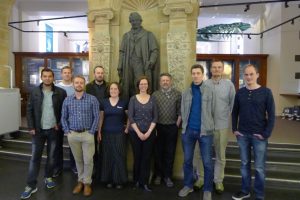
QUEST team at the Sedgwick Museum of Earth Sciences in Cambridge, 26th April 2016. From left to right: Fernando, Denis, Adam, Nono, Beth, Catherine, Dave, Norbert, Seb, Max.
Sebastian Breitenbach
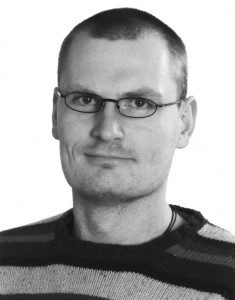 Sediment and Isotope Geology
Sediment and Isotope Geology
Institute for Geology, Mineralogy & Geophysics
Ruhr-Universität Bochum
Universitätsstr. 150
44801 Bochum
Germany
Seb is an enthusiastic speleologist, working in disperse regions and on a wide range of topics related to environmental change. He did his PhD in 2009 at the University of Potsdam and the GFZ Potsdam focusing on the Indian summer monsoon. Seb continued to study stable isotopes in speleothems as postdoc at the ETH Zurich. Since his PhD he collaborated closely with the nonlinear time series analysts at Potsdam Institute for Climate Impact Research (PIK). There he joined Stefano Bernasconi’s ETH Clumpy Team, which investigates clumped isotopes in carbonate systems. He then moved to Cambridge to take responsibility of the clumped isotope setup at the Godwin Laboratory for Palaeoclimate Research. Recently, Seb took a post as Researcher in the Sediment and Isotope Geology Department at the Ruhr-University Bochum.
Adam Hartland
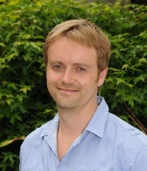 Environmental Research Institute
Environmental Research Institute
School of Science
University of Waikato
Hamilton
New Zealand
I am an environmental geochemist specialising in the aqueous and interfacial chemistry of natural systems. Caves provide windows into the soil-groundwater system and through speleothem deposition, record information on infiltration dynamics and groundwater hydrology. My overall goal in QUEST is to harness the interaction of colloids (particles between 1 and 1000 nm), natural organic ligands and complexed (chemically-bound) metals, in order to develop proxies of past environmental change. The broader scale biogeochemical significance of these species in soil and natural waters is the focus of my research group.
Beth Fox
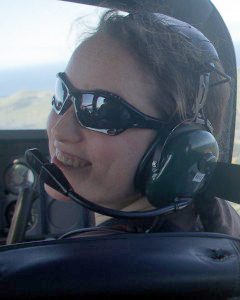
School of Science
University of Waikato
Private Bag 3105
Hamilton 3240
New Zealand
Beth is a palaeoclimatologist and palaeomagnetist specialising in high-resolution climate reconstruction and weakly magnetised sediments. She received her PhD in 2014 from the University of Otago, New Zealand, and in the same year took up a lectureship at the University of Waikato, where she teaches sedimentary geology. She is particularly interested in untangling regional and global climate signals from terrestrial archives such as speleothems and lake sediments, and has spent much of her research career working on spectacularly well-preserved Miocene lake sediments in New Zealand. Her role in QUEST is to work with Ioan Lascu to characterise the magnetic minerals preserved in speleothems and investigate how they came to be incorporated into the speleothem calcite.
Norbert Marwan
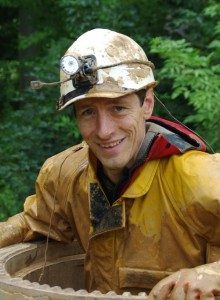
Potsdam Institute for Climate Impact Research
Telegrafenberg A56
(PO) box number 60 12 03
14412 Potsdam
Norbert is an interdisciplinary researcher at the Potsdam Institute for Climate Impact Research with focus in developing and applying advanced methods for nonlinear data analysis. He got his PhD in the field of theoretical physics at the University of Potsdam but also received some basic pre-university education in geology and is a passionate speleologist mainly working in the alpine karst. Highlights of his work cover methodological developments in complex networks and recurrence based methods, spatio-temporal and 3D image analysis, causality testing, as well as parameter-free statistical tests.
Bedartha Goswami
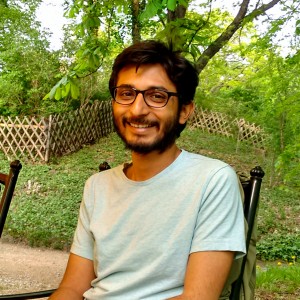
Institute of Earth and Environmental Science
University of Potsdam
Bedartha got his PhD in Climate Physics from the University of Potsdam on his dissertation titled “Uncertainties in climate data analysis”. He worked with the nonlinear time series analysis group (RD IV) at the Potsdam Institute for Climate Impact Research (PIK) during this time. He specialises in applying and developing time series analysis methods and has actively collaborated with paleoclimate scientists during his doctoral work. He has also actively been part of developing and releasing open source software packages for geoscience data analyses with his former group at PIK. Currently, he is working with Prof. Bodo Bookhagen on developing new methods for the analysis of satellite measurement datasets, with a focus on digital elevation model data.
Ioan (Nono) Lascu
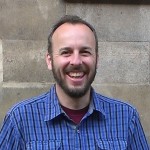 University of Cambridge
University of Cambridge
Department of Earth Sciences
Downing Street
Cambridge CB2 3EQ
United Kingdom
Nono is a researcher at the University of Cambridge with broad interests in sedimentary environments, global climate change, and the magnetism of natural materials. His research tackles problems dealing a variety of topics, including environmental magnetism, the magnetism of cave deposits, biogenic magnetic minerals, and the quantification of magnetic components in geologic materials. Ioan received a B.Sc. degree from Babeș-Bolyai University in Cluj, Romania, where he examined the paleoclimate of the Transylvanian Basin during the Late Glacial, a M.Sc. degree from Mississippi State University, where he investigated carbonate island karst development in the Bahamas in relation to sea level change over the last interglacial-glacial cycle, and a Ph.D. title from the University of Minnesota, where he studied quantitative environmental magnetism of lake sediments. He is currently working on a project entitled “Nanopaleomagnetism – A multiscale approach to paleomagnetic analysis of geological materials” that combines magnetic methods with nano- and micro-scale advanced imaging techniques.
Thorsten Hoffmann
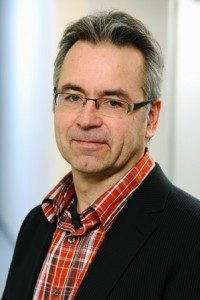
Johannes Gutenberg-Universität
Institut für Anorganische und Analytische Chemie
Duesbergweg 10-14
55128 Mainz
Germany
Thorsten Hoffmann is Professor of Analytical Chemistry at the Johannes Gutenberg-University of Mainz, Germany, since 2003. Before he had a stand-in Professorship at the University of Leipzig and was coordinator of the research areas ‘Analytical Methods in the Life Sciences’ and ‘Atmospheric Trace Constituents’ at the Leibniz-Institut für Analytische Wissenschaften – ISAS in Dortmund. Between October 1994 and October 1995 he hold a postdoc position at the California Institute of Technology (Caltech, Pasadena, USA) in the group of John H. Seinfeld. Up to now, he advised more than 30 diploma/master students and 28 Ph.D. students (plus 8 current). He is author/co-author of more than 120 peer reviewed scientific papers. His main research activities are the design and development of tailored methods to chemically characterize biological and environmental matrixes. The motivation is a better understanding of biosphere-atmosphere interactions, e.g. by the investigation of the sources, formation pathways and chemical transformation of biogenic aerosol particles in marine or terrestrial atmosheres, or the development of trace analytical techniques to investigate climate archives (ice cores, speleothems). Most of the analytical research is focussed on organic analytes in combination with mass spectrometry (GC/MS, LC/MS) with a certain emphasis on the development of real-time methods for atmospheric aerosol characterization (aerosol mass spectrometry).
Inken Heidke
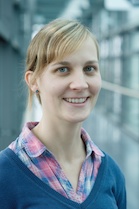
Johannes Gutenberg-Universität
Institut für Anorganische und Analytische Chemie
Duesbergweg 10-14
55128 Mainz
Germany
I studied chemistry at the Johannes Gutenberg-University of Mainz and focused on the subject of analytical chemistry. During my diploma project in the group of Thorsten Hoffmann, I got in contact with the topics of climate archives, caves and speleothems for the first time. My colleague Janine Bosle had done a non-target analysis of speleothem samples, where she discovered several interesting groups of organic substances occurring in speleothems. Of these, I chose lignin as the most promising vegetation biomarker, because it is only produced by vascular plants. Moreover, the analysis of lignin-oxidation products provides information not only about the vegetation density, but also about the type of vegetation. In my current PhD project, I try to further improve the analytical method for the analysis of lignin-oxidation products in speleothems developed during my diploma project. Furthermore, I want to gain a better understanding of how the vegetation signal is transported to and preserved in the speleothems by analysing speleothem and drip water samples from different vegetation zones.
Fernando Gazquez
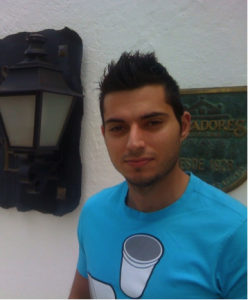
University of Cambridge
Department of Earth Sciences
Downing Street
Cambridge CB2 3EQ
United Kingdom
Fernando is an interdisciplinary researcher at the Department of Earth Sciences of Cambridge University. He obtained his PhD at the University of Almeria (Spain) in the field of Environmental Sciences, with focus on the geochemical characterisation of gypsum speleothems for palaeoclimatic purposes. He is involved in several international projects, most addressing mineralogical and isotopic characteristics of speleothems, as well as geomorphological and microclimatic processes in caves. Highlights of his work are his studies in the caves of the Naica mine (Mexico), El Soplao cave and the gypsum karst of Sorbas (Spain). Remarkably, he has investigated degradation processes affecting historical buildings, masterpieces and rock-art in caves, including several UNESCO World Heritage Sites. Recently, he has been involved in several research projects on the origin of hypogenic caves and the mineralogy of siliceous speleothems in lava tubes of Galapagos Islands and Eastern Island. His current research activity is devoted to the analysis of stable isotopes in hydration water of minerals with application to Palaeoclimatology and Astrobiology.
Denis Scholz
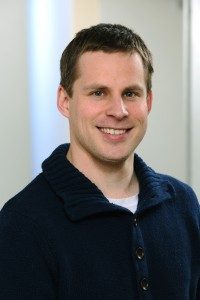
Johannes-Gutenberg-Universität Mainz
Institut für Geowissenschaften
Johann-Joachim-Becher-Weg 21
55128 Mainz
Germany
For a bull bio, follow this link to his homepage
Maximilian Hansen
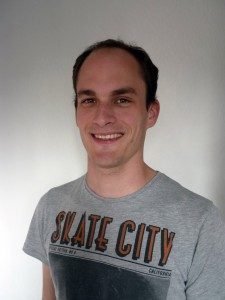
Johannes-Gutenberg-Universität Mainz
Institut für Geowissenschaften
Johann-Joachim-Becher-Weg 21
55128 Mainz
Germany
I studied geology at the University of Mainz, where I focused on exogenous processes and environmental geochemistry. At the end of my studies, Denis Scholz started to build up a speleothem working group at our department. This is how I got in touch with the world of caves and how speleothems can be used as unique paleoclimate records. During my diploma thesis we set up and tested novel laboratory experiments with synthetic carbonates aiming to understand the basic physical and chemical processes, which influence the stable isotope signals (δ13C and δ18O) in speleothems. During my currently running PhD project we strongly improved the method by building up a system to resemble closely a natural cave system in the laboratory. Since then I got deeper and deeper into experimental realization of cave processes and (cave) carbonate geochemistry.
Dave Hodell
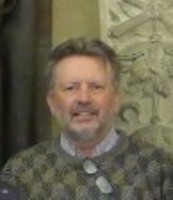
University of Cambridge
Department of Earth Sciences
Downing Street
Cambridge CB2 3EQ
United Kingdom
Palaeo-climatology, -oceanography and -limnology
Catherine Hill
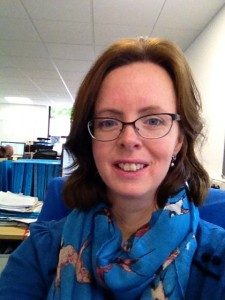
Coordinator Grants Manager
Research Operations Office
University of Cambridge
Catherine has worked within the University of Cambridge Research Operations Office for over 8 years as the Coordinator Grants Manager within the European Team, gaining an in-depth knowledge of European funding rules. Catherine will assist Prof Hodell and Dr Breitenbach in the Coordination of the QUEST project by overseeing partner payments, reporting submission, partner financial guidance, reconciliation of finances, project budget monitoring and any contractual amendments.
Rahul Jangali

Research Assistant
University of Waikato
Rahul is a Mechanical engineer and currently studying towards his Master of Engineering at the University of Waikato to design and develop a cave autosampler. Rahul has recently completed his Bachelor of Mechanical Engineering with Honours from the University of Waikato. He has industrial experience specialising in Production engineering, heavy manufacturing, machine design and hands-on skills from working as an engineer prior to tertiary education at the university.
Cinthya Nava Fernandez
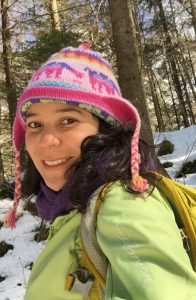
PhD candidate
Ruhr-Universität Bochum
Cinthya joins the QUEST team in October 2017 as PhD candidate. She has a great interest in understanding how the global climate works, for palaeoclimate science and its relationship with current climate change, and in the different proxies and analytical techniques to interpret past climate dynamics.
Anja Beschnitt
PhD candidate
Johannes Gutenberg-University
After studying Applied Chemistry (B.Sc.) and Bio- and Pharmaceutical Analysis (M.Sc.) at the University of Applied Sciences Fresenius in Idstein (Germany) I joined the working group of Thorsten Hoffmann at the Johannes Gutenberg-University in Mainz (Germany) for my master thesis in analytical chemistry. During the master thesis I focused on the development and improvement of methods for organic trace analysis in climate archives like ice cores and speleothems.
In my current PhD project I am following the work of my colleague Inken Heidke and transferred a new degradation method for lignin in sediments to the speleothem matrix. This work was presented at the ANAKON 2019 in Münster (DE) and the EGU General Assembly 2019 in Vienna (AUT). Furthermore we are working on a new method to analyse levoglucosan as a biomass burning marker in speleothems. Levoglucosan was chosen as the main combustion product of cellulose at temperatures >300°C. Therefore it can be used to gain more information on paleofire history.
Since levoglucosan and lignin are found in atmospheric fine particulate matter, both can be transported over long range and levoglucosan has already been detected in ice cores from Polar regions. Therefore the developed methods will be further applied for organic trace analysis in ice cores during my PhD.
Other team members include:
Markus Kalberer
- Richard Harrison
University of Cambridge
Department of Earth Sciences
Downing Street
Cambridge CB2 3EQ
United Kingdom
Mineral Magnetism from the Atomic to the Planetary Scale
